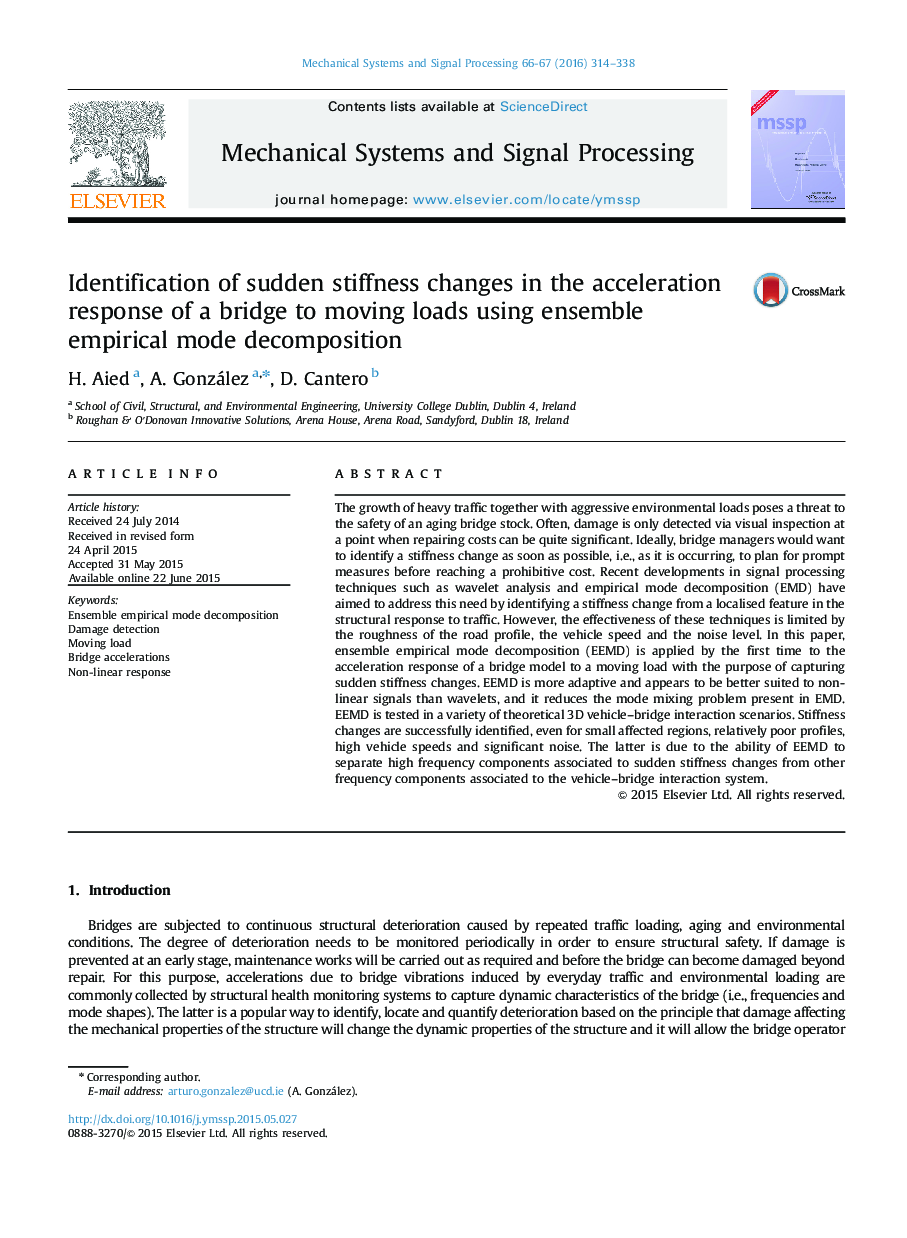| Article ID | Journal | Published Year | Pages | File Type |
|---|---|---|---|---|
| 559132 | Mechanical Systems and Signal Processing | 2016 | 25 Pages |
•Nonlinear structural model based on a bi-linear hysteretic moment–curvature relationship.•Brief stiffness changes are identified from the acceleration response to a moving load.•Ensemble empirical mode decomposition, EMD and wavelet analysis are compared.•Stiffness losses captured by EEMD for high vehicle speeds, rough profiles and noisy data.
The growth of heavy traffic together with aggressive environmental loads poses a threat to the safety of an aging bridge stock. Often, damage is only detected via visual inspection at a point when repairing costs can be quite significant. Ideally, bridge managers would want to identify a stiffness change as soon as possible, i.e., as it is occurring, to plan for prompt measures before reaching a prohibitive cost. Recent developments in signal processing techniques such as wavelet analysis and empirical mode decomposition (EMD) have aimed to address this need by identifying a stiffness change from a localised feature in the structural response to traffic. However, the effectiveness of these techniques is limited by the roughness of the road profile, the vehicle speed and the noise level. In this paper, ensemble empirical mode decomposition (EEMD) is applied by the first time to the acceleration response of a bridge model to a moving load with the purpose of capturing sudden stiffness changes. EEMD is more adaptive and appears to be better suited to non-linear signals than wavelets, and it reduces the mode mixing problem present in EMD. EEMD is tested in a variety of theoretical 3D vehicle–bridge interaction scenarios. Stiffness changes are successfully identified, even for small affected regions, relatively poor profiles, high vehicle speeds and significant noise. The latter is due to the ability of EEMD to separate high frequency components associated to sudden stiffness changes from other frequency components associated to the vehicle–bridge interaction system.
